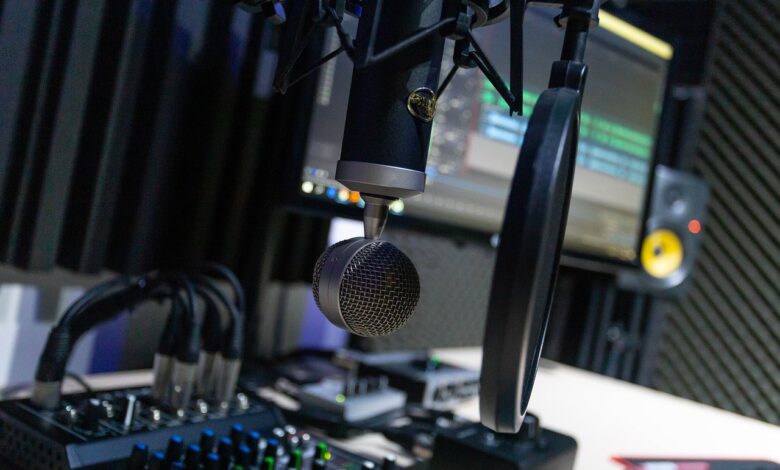Radio Station Studio Setup Basics

A radio station studio is the heart of any broadcasting operation, serving as the control center where ideas transform into audio content that reaches audiences across the airwaves. Setting up a radio station studio requires a combination of technical expertise, strategic planning, and a clear understanding of the essential components that make a broadcast successful. This essay explores the fundamental elements of a radio station studio setup, including the key equipment, layout considerations, and operational necessities.
Core Equipment
The backbone of any radio studio is its equipment, which facilitates the production and transmission of audio content. The essential hardware includes microphones, audio mixers, headphones, and computers.
- Microphones: High-quality microphones are crucial for capturing clear and professional sound. Condenser microphones are often preferred for their sensitivity and ability to capture a broad frequency range, making them ideal for spoken word and music.
- Audio Mixers: The audio mixer serves as the hub for all audio inputs and outputs, allowing operators to control sound levels, mix multiple audio sources, and add effects. A reliable mixer ensures smooth transitions between segments and maintains consistent sound quality.
- Headphones: Studio-grade headphones are necessary for monitoring sound in real-time. They help hosts and producers ensure the audio is balanced and free from distortions.
- Computers and Software: Computers equipped with broadcasting software are indispensable for scheduling programs, playing pre-recorded content, and managing live broadcasts. Software like automation tools and digital audio workstations streamline operations and enhance production quality.
- Broadcast Console: This specialized equipment integrates audio sources, manages signal routing, and ensures seamless transitions during live broadcasts. It is the nerve center of the studio.
- Transmitters and Antennas: These are essential for sending the radio signal to the audience. Depending on the station’s coverage area, the power and range of the transmitter will vary.
- Acoustic Treatment: To ensure high sound quality, the studio must be acoustically treated. This involves installing soundproofing materials to minimize external noise and adding absorptive panels to reduce echoes within the room.
Studio Layout and Design
A well-designed studio layout is vital for efficient operation. The arrangement of equipment should prioritize functionality and accessibility, enabling seamless workflow during live and recorded sessions.
- Ergonomics: Studio furniture should be designed with ergonomics in mind, ensuring that operators can work comfortably for extended periods. Adjustable chairs, desks, and microphone arms contribute to a productive environment.
- Work Zones: The studio should be divided into functional zones, such as the presenter’s area, producer’s desk, and guest seating. Clear delineation of spaces minimizes disruptions and enhances collaboration.
- Cable Management: Proper cable management is essential for maintaining a tidy and safe workspace. Labeled cables and concealed wiring systems prevent technical issues and reduce the risk of accidents.
Operational Essentials
Beyond the physical setup, operational aspects are critical to the success of a radio station studio.
- Internet Connectivity: A stable internet connection is indispensable for modern radio stations. It enables live streaming, access to online resources, and communication with remote contributors.
- Backup Systems: Redundancy is key to avoiding downtime. Backup power supplies, spare equipment, and duplicate software installations ensure that the station remains operational during technical failures.
- Compliance and Licensing: Adhering to legal requirements, such as obtaining broadcasting licenses and complying with copyright laws, is essential for lawful operations.
- Training and Staff: A skilled team is vital for managing the technical and creative aspects of broadcasting. Regular training ensures staff stay updated with industry advancements and best practices.
- Monitoring and Feedback: Continuous monitoring of broadcasts and audience feedback helps maintain quality and identify areas for improvement.
Setting up a radio station studio requires a blend of technical infrastructure, thoughtful design, and operational planning. Each component plays a vital role in ensuring the station delivers high-quality content to its audience. By investing in the right equipment, optimizing the studio layout, and implementing robust operational practices, a radio station can create a professional and efficient broadcasting environment that captivates listeners and fosters engagement. Whether for community, commercial, or public radio, a well-established studio is the foundation of a successful station.




